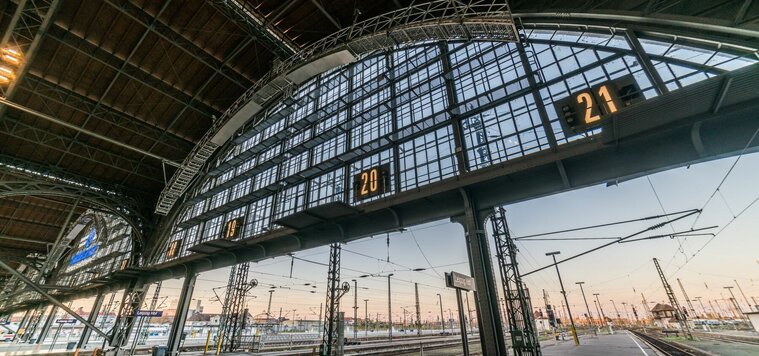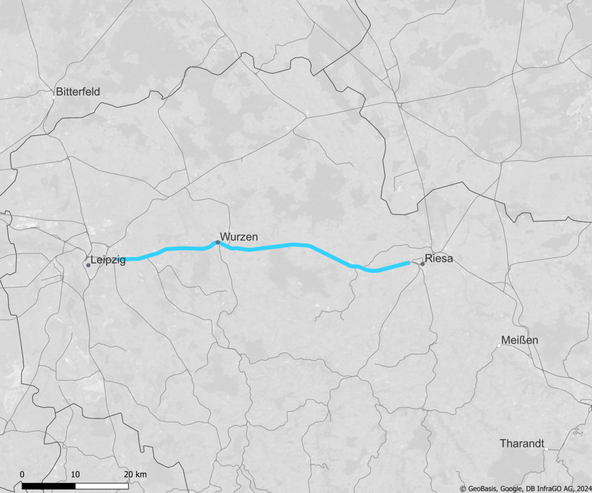
Leipzig – Riesa gap closure
ETCS is being introduced on the Leipzig – Riesa section and the existing interlockings are being modernised. This will make it possible to use these technologies on the 6363 Leipzig – Dresden line without any gaps in the future.
Project duration
Route data
| Line from | Leipzig |
|---|---|
| Line to | Riesa |
| Kilometers of line to be equipped | 61 km |
| Route number(s) | 6363 |
Planned actions
| ETCS | Level 2 without signals |
|---|---|
| Interlocking(s) | 7 DSTW |
| Scope of equipment |
|
| Planned speed | 200 km/h |
Contact
Disclaimer
The dates shown are legally non-binding forecasts based on the current status. The forecasts are in no way intended to establish any kind of legal claim whatsoever that completion will take place by the specified date and that use will be possible. For these reasons, the information should also not be used to make or prepare business decisions, for example, but not conclusively, with regard to the vehicle equipment or the compatibility between the vehicles and the infrastructure. If you have any questions, particularly regarding technical network access or obtaining binding information, please contact your customer advisor.
Most of the infrastructure projects are still in the planning phase, which means that the information provided on these pages reflects the current planning status and is updated regularly.
The project aims to close the ETCS gap between the German Unity No. 8 (VDE 8 Nuremberg – Berlin) and German Unity No. 9 (VDE 9: Leipzig – Dresden) transport projects. The abbreviation ETCS stands for the European Train Control System, which is standardised throughout Europe. This will be introduced on the line in Level 2 without signals (ETCS L2oS). The Leipzig – Riesa section is located on the "Orient/Eastern Mediterranean" trans-European transport network corridor (TEN corridor).
The installation of ETCS L2oS on this section of line replaces the national train control systems linear train control (LZB) and intermittent automatic train-running control (PZB) and requires the modernisation of the interlocking system. The DSD vision will thus be realised.
Bauende Bahn
This is a Deutsche Bahn project. We are building. So that people can build on us again. More information about the Bauende Bahn can be found here (in German only).

